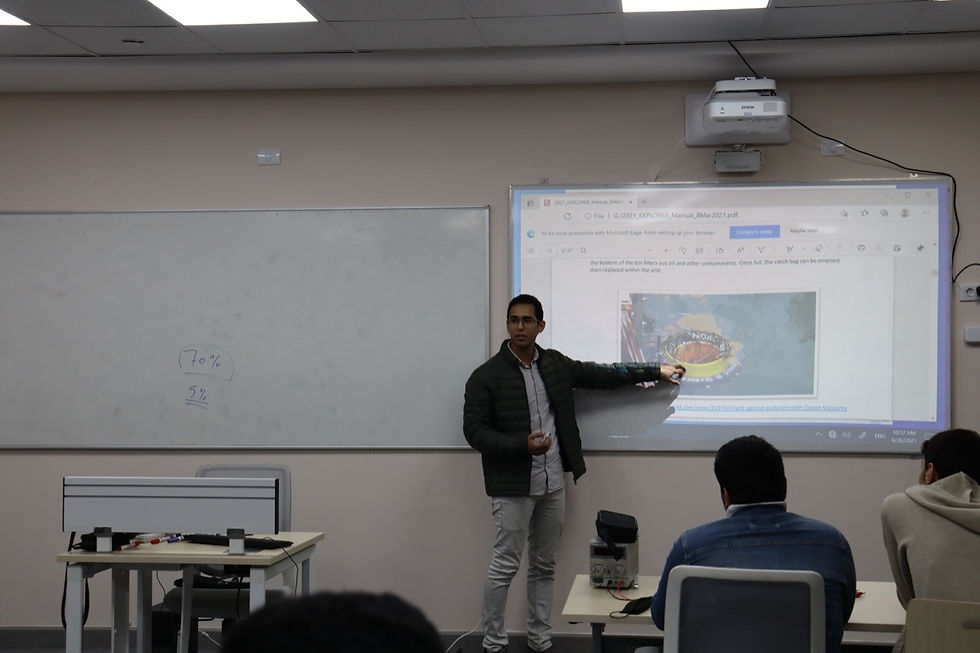

Training Arena
Training ROV teams for the ROV Egypt competition involves a multi-faceted approach. Students learn about ROV design, construction, and programming, focusing on underwater navigation, obstacle avoidance, and mission-specific tasks. Hands-on experience is crucial, with students building and testing ROVs in controlled environments and eventually in underwater pools. Regular practice sessions refine piloting skills and problem-solving abilities. Additionally, workshops on electronics, hydraulics, and 3D modeling enhance technical expertise. Mentorship from experienced engineers and scientists provides guidance and support throughout the training process, ensuring students are well-prepared to compete at the highest level.
Program Structure
Level 1
3 Core courses
Level 2
Branch A
Level 2
Branch B
Level 2
Branch C
Level 3
Assembly ROV
The program consists of 8 courses that are distributed among 3 levels of education shown in the above figure.
Level 1 contains the course courses, while level 2 is divided into 3 main branches:
A) Mechanical Design.
B) Image Processing.
C) Image Processing.
Finally, level 3 contains the assembly of the ROV.
Level 1 Core courses:
-
Intro to electrical and electronic circuits: 25 hours
-
Introduction to Programming : missing tutorials : 25 hours
-
Introduction to ROV mechanical structure: 25 hours
Level 2: specialized branches
Branch A: Mechanical design
-
Mechanical design using computer aided solid works: 25 hours
-
Mechanical design (Materials handling and fluid dynamics): 25 hours
Branch B: Image Processing
-
Introduction to Image processing: 25 hours
-
Image processing using Matlab: 25 hours
Branch C : Electronic and Control design
-
Electronics and Electric system design : 25 hours
-
ROV control : Needs more tutorials or examples and explaining in wordings : 25 hours
Level 3: Assembly of ROV
The third level involves the final assembly and piloting of the ROV. This includes power systems, water sealing, control systems, vehicle design, thrusters, cabling, sensors, lighting, manipulators, and communication systems.
Training Gallery








